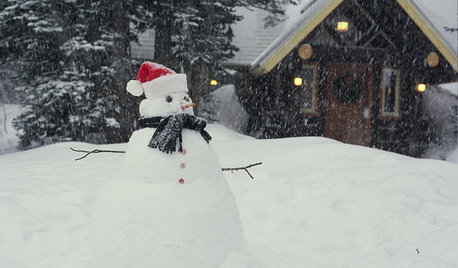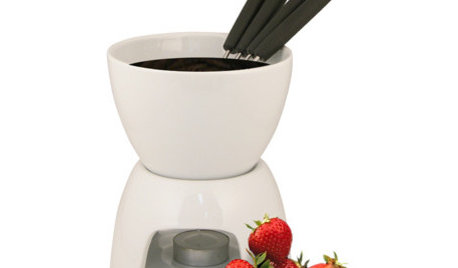What about this idea to keep worms warm in winter?
chrissy752001
18 years ago
Related Stories

BATHROOM DESIGN15 Ways to Warm Up Your Bathroom for Winter
Keep the chill away in body and spirit with everything from warm colors to high-end bathroom features
Full Story
FEEL-GOOD HOMEStop That Draft: 8 Ways to Keep Winter Chills Out
Stay warm without turning up the thermostat by choosing the right curtains, windows and more
Full Story
Warm Up Your Home for Winter
Look forward to the indoor season, equipped with a cozy environment at home
Full Story
PRODUCT PICKS41 Finds to Keep You Warm
Show that cold spell who's boss with robes, blankets, freestanding fireplaces and more warming comforts of home
Full Story
ARCHITECTUREHow Thermal Mass Keeps You Warm and Cool
Passive solar design makes use of this element. Here’s how it works and how you can get it in your home
Full Story
PATIOSLandscape Paving 101: Travertine Keeps Its Cool in Warm Climates
Travertine is a gorgeous paver for a pool surround
Full Story
GARDENING GUIDESHouzz TV: Make a Worm Bin for Rich Soil and Happy Plants
A worm-powered compost bin that can fit under a sink turns food scraps into a powerful amendment for your garden. Here’s how to make one
Full Story
BEDROOMSWarm Up Your Bedding for Winter
Plain white, patchwork or plaid, an extra quilt or blanket brings the cozy, keeps the chic
Full Story
LIFEShare Your Winter Storm Jonas Photos and Survival Tips!
Let’s see your pictures and hear your ideas on how you’re keeping your house warm and staving off cabin fever
Full Story
Guest Picks: Winter (Yes, Winter) Warmers
For folks in the Southern Hemisphere, July is right in the heart of winter. Warm up with 20 ways to make your home as cozy as can be
Full StorySponsored
Most Skilled Home Improvement Specialists in Franklin County
More Discussions






squeeze
heidi41
Related Professionals
Middle River Landscape Architects & Landscape Designers · Burlington Landscape Contractors · Surprise Landscape Contractors · Belvedere Park Landscape Contractors · Haverhill Landscape Contractors · Mequon Landscape Contractors · North Ridgeville Landscape Contractors · Pleasant Prairie Landscape Contractors · Point Pleasant Landscape Contractors · West Haverstraw Landscape Contractors · San Pablo Landscape Contractors · Haysville General Contractors · New Milford General Contractors · Oneida General Contractors · Waimalu General Contractorswfike
AbbeysDad
chuckiebtoo
beaudry
wormmainea
wormmainea